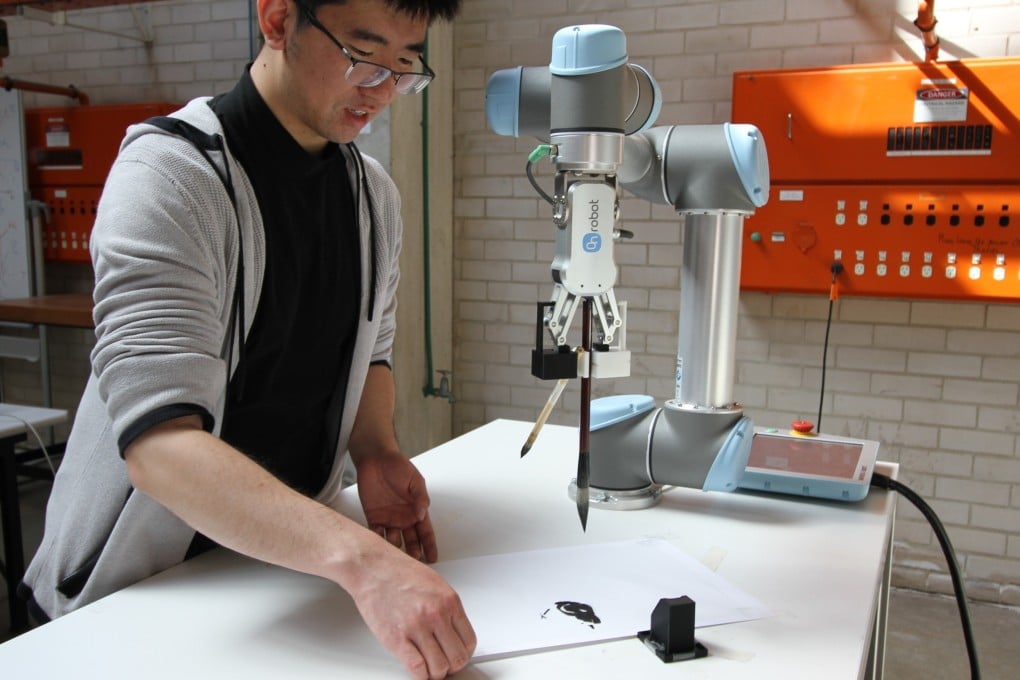Chinese ink painting robot that can create works from scratch created by university student with flair for art and mathematics
- The mechanical engineering student has programmed a robot that can produce a traditional Chinese ink painting in a style known as guóhuà
- The program can create a piece of art instead of simply copying existing works

There’s no point asking Australian student Wenzheng Zhang whether he favours the creative right side of the brain or the logical left side. He’s mastered both.
To prove it, Zhang, who attends the University of Sydney, has combined his passion for art and robotics to create a program that produces a traditional style of Chinese ink painting known as guóhuà.
The mechanical engineering student created a robot that – armed with two paintbrushes, a pot of ink and art paper – is programmed to paint small chickens, the traditional elementary subject that apprentice artists must master before progressing to more complex images.
Zhang, who has been drawing and painting with ink since he was five years old, started experimenting with a robotic arm at university. It was during a mechanical engineering class that the idea to combine his two passions struck.
“What I’ve achieved is the framework of a painting process which uses a program that allows the arm to paint in a similar way to a human,” says the 29-year-old. “Instead of using image processing to determine the image’s trajectory, a mathematical and geometrical relation is used.”
“The purpose is to try to replicate the human thought process, such as getting the robot to focus more on how the painting starts rather than how it finishes. The robot must contemplate the canvas and effectively work out the drawing on its own.